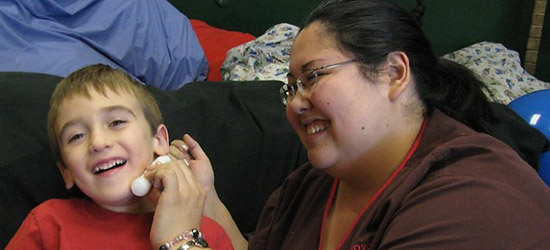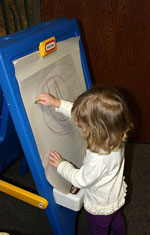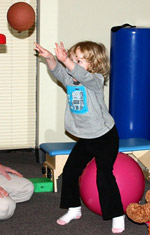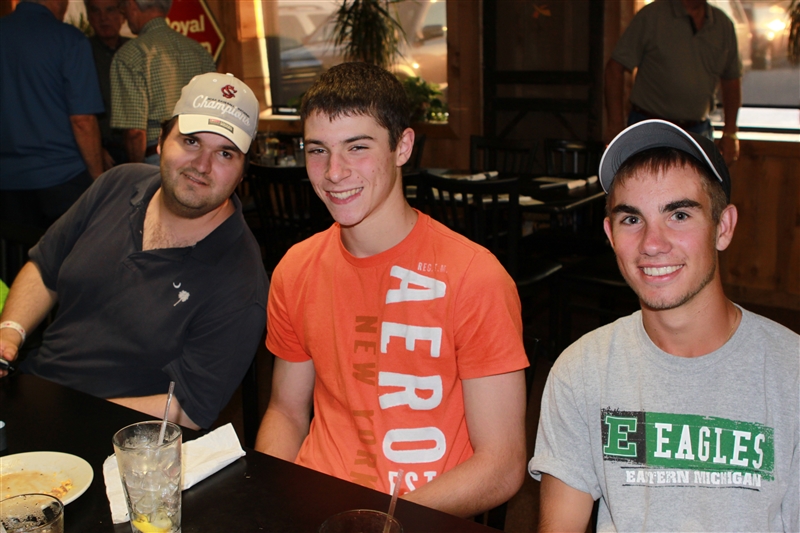
Occupational therapists (OTs) help children with hemiplegia improve their ability to perform tasks in their daily living. They help children succeed in their “occupation” of learning, playing, and growing. When skill and strength cannot be developed or improved, occupational therapy offers creative solutions and resources to help your child carry out her daily activities.
OTs may specifically help children with hemiplegia with tasks such as improving hand function, strengthening hand, shoulder and torso, and eating skills. Therapists may also recommend a hand splint for active use or for stretching at night. Some therapists actually make the splint; others may measure your child’s hand and order a splint. In schools OTs evaluate children’s abilities, recommend and provide therapy, modify classroom equipment, and in general, help children participate as fully as possible in school programs and activities. Traditionally, for children with hemiplegia, the occupational therapist works with the child’s upper extremity.
Occupational Therapy Links
American Occupational Therapy Association offers a feature called “Find an Occupational Therapist”
Parent Questions about Occupational Therapy
How long does school have to fill occupational therapy vacancy?
I need ideas for fun ways to help my child use her hand more
Clinical Research Centers
Center for Cerebral Palsy Research This non-profit organ ization, located at Teachers College, Columbia University, is committed to understanding the mechanisms underlying the symptoms of cerebral palsy and developing evidence-based treatment approaches targeting these symptoms.They have been dedicated to studying the mechanisms underlying the impaired hand function in cerebral palsy since 1991.
ization, located at Teachers College, Columbia University, is committed to understanding the mechanisms underlying the symptoms of cerebral palsy and developing evidence-based treatment approaches targeting these symptoms.They have been dedicated to studying the mechanisms underlying the impaired hand function in cerebral palsy since 1991.
Journal Article Links
Pilot study: Investigating the effects of Kinesio Taping® on functional activities in children with cerebral palsy. 2013. Brazil
The effects of Kinesio® taping on sitting posture, functional independence and gross motor function in children with cerebral palsy. March 2011. Turkey
A detailed analysis of the planning and execution of prehension movements by three adolescents with spastic hemiparesis due to cerebral palsy. June 2004. The Netherlands
How do strength, sensation, spasticity and joint individuation relate to the reaching deficits of people with chronic hemiparesis?. May 2004. Baltimore, MD.
A detailed analysis of the planning and execution of prehension movements by three adolescents with spastic hemiparesis due to cerebral palsy. June 2004. The Netherlands
Constraints on grip selection in hemiparetic cerebral palsy: effects of lesional side, end-point accuracy, and context. April 2004. The Netherlands
Intraobserver reliability of the modified Tardieu scale in the upper limb of children with hemiplegia. April 2004. New Zealand.
Electrostimulation at sensory level improves function of the upper extremities in children with cerebral palsy: a pilot study Feb. 2004. Finland
Object release under varying task constraints in children with hemiplegic cerebral palsy
Hand function in children with hemiplegic cerebral palsy: prospective follow-up and functional outcome in adolescence. Italy. Feb. 2003
Forced use treatment of childhood hemiparesis, 2002
Comparing tests of tactile sensibility: aspects relevant to testing children with spastic hemiplegia, Sept. 2002, Sweden.
Bilateral facilitation of motor control in chronic hemipleia, 2002.
Intact motor imagery in chronic upper limb hemiplegics: evidence for activity-independent action representations, Aug. 2002
Forced use treatment of childhood hemiparesis, July 2002. 12 participants, ages 1 to 8 years. Louisiana.
Effects of a functional therapy program on motor abilities of children with cerebral palsy 2002
Constraint-induced therapy for stroke: more of the same or something completely different? 2002
Management of upper limb dysfunction in children with cerebral palsy: a systematic review , Nov. 2001, presents the results of a systematic review of the literature on the management of upper limb dysfunction in children with CP.
Effects of functional electric stimulation on upper limb motor function and shoulder range of motion in adult hemiplegic patients
Stroke patients’ and therapists’ opinions of constraint-induced movement therapy








